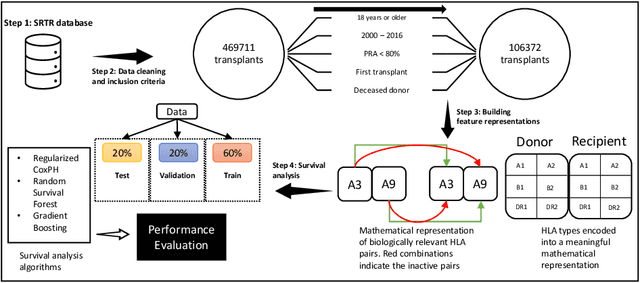Mohammadreza Nemati
LIT-LVM: Structured Regularization for Interaction Terms in Linear Predictors using Latent Variable Models
Jun 18, 2025Abstract:Some of the simplest, yet most frequently used predictors in statistics and machine learning use weighted linear combinations of features. Such linear predictors can model non-linear relationships between features by adding interaction terms corresponding to the products of all pairs of features. We consider the problem of accurately estimating coefficients for interaction terms in linear predictors. We hypothesize that the coefficients for different interaction terms have an approximate low-dimensional structure and represent each feature by a latent vector in a low-dimensional space. This low-dimensional representation can be viewed as a structured regularization approach that further mitigates overfitting in high-dimensional settings beyond standard regularizers such as the lasso and elastic net. We demonstrate that our approach, called LIT-LVM, achieves superior prediction accuracy compared to elastic net and factorization machines on a wide variety of simulated and real data, particularly when the number of interaction terms is high compared to the number of samples. LIT-LVM also provides low-dimensional latent representations for features that are useful for visualizing and analyzing their relationships.
Predicting Kidney Transplant Survival using Multiple Feature Representations for HLAs
Mar 04, 2021

Abstract:Kidney transplantation can significantly enhance living standards for people suffering from end-stage renal disease. A significant factor that affects graft survival time (the time until the transplant fails and the patient requires another transplant) for kidney transplantation is the compatibility of the Human Leukocyte Antigens (HLAs) between the donor and recipient. In this paper, we propose new biologically-relevant feature representations for incorporating HLA information into machine learning-based survival analysis algorithms. We evaluate our proposed HLA feature representations on a database of over 100,000 transplants and find that they improve prediction accuracy by about 1%, modest at the patient level but potentially significant at a societal level. Accurate prediction of survival times can improve transplant survival outcomes, enabling better allocation of donors to recipients and reducing the number of re-transplants due to graft failure with poorly matched donors.
 Add to Chrome
Add to Chrome Add to Firefox
Add to Firefox Add to Edge
Add to Edge